How the War Crates Flew: Bombs and Bombing
FROM the pages of the February 1933 number of Sky Fighters:
Editor’s Note: We feel that this 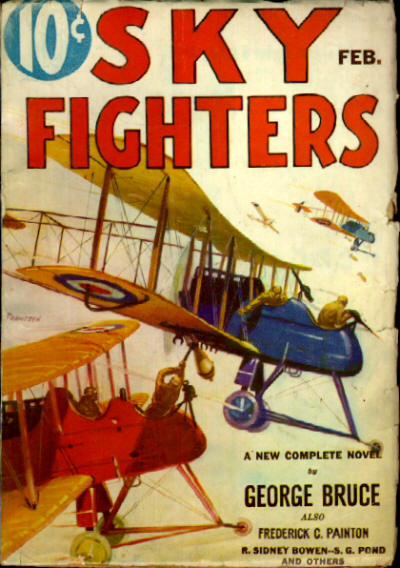 magazine has been exceedingly fortunate in securing R. Sidney Bowen to conduct a technical department each month. It is Mr. Bowen’s idea to tell us the underlying principles and facts concerning expressions and ideas of air-war terminology. Each month he will enlarge upon some particular statement in the stories of this magazine. Mr. Bowen is qualified for this work, not only because he was a war pilot of the Royal Air Force, but also because he has been the editor of one of the foremost technical journals of aviation.
magazine has been exceedingly fortunate in securing R. Sidney Bowen to conduct a technical department each month. It is Mr. Bowen’s idea to tell us the underlying principles and facts concerning expressions and ideas of air-war terminology. Each month he will enlarge upon some particular statement in the stories of this magazine. Mr. Bowen is qualified for this work, not only because he was a war pilot of the Royal Air Force, but also because he has been the editor of one of the foremost technical journals of aviation.
Bombs and Bombing
by Robert Sidney Bowen (Sky Fighters,February 1933)
SIT down, you buzzards, and stay down! Any side remarks and I’ll. . . . Huh? What’s that? Why am I all steamed up? Well, just take a look at this letter. The darn thing explains itself.
Dear Uncle Wash-out:
I think SKY FIGHTERS is a pretty swell magazine even if it does contain your stuff. But I’m just kidding about the last part. I guess you’ll do all right.
However, here is a complaint. Wasn’t there anything else besides pursuit ships in the World War? Or were they the only ones you knew how to fly? Seems to me that I’ve read some slick yarns in this mag that had to do with bombing raids. Do you know anything about the technical side of bombing, or are you just plain dumb about that sort of thing?Henry Craveil
Now, if Henry lived just across the street I’d sure step over and bend a couple of one hundred and twenty pound bombs over his dome. But he happens to live out in Oregon, and that’s too much of a walk for me. So I’ve just got to swallow that there insult, and try to fix Henry up the best I can. And while I’m doing it you other crash hounds can pin back your ears and get a brain full.
Yes, I’ve shoved a few bombers around in my day, and have dropped a couple of eggs here and there. Now don’t go asking me what I hit, because I promised the C.O. of this mag never to tell a lie, and I’m not going to break that promise just to maintain my glorious reputation with you birds.
But, shut up! Let’s get serious.
World War airplanes were divided into three general classes. They were pursuit planes, observation planes, and bombing planes. Of the three classes the pursuit ship was the only one that could perform all three functions. Now, when I say that, I don’t mean to imply that it was a waste of time to have observation ships and bombers in action. Naturally, each type of ship could perform its own particular job better than either of the other two. However, a pursuit ship could serve as a scouting plane, an observation plane, and also drop a total of about eighty to one hundred pounds of bombs. An observation plane could do its job of reconnaissance and drop bombs as well. And perhaps in a pinch serve as a pursuit ship. I say that because the well-known Bristol Fighter could outfly almost any pursuit ship, at least from the standpoint of speed. Another one, too, was the British DH9 powered with the Liberty or Rolls-Royce engine.
But for the sake of this chinfest we’ll say that the general run of observation ships were not good in pursuit work. The bombers, of course, were ships built for the job that the name implies—bombing. However, they could also function as observation ships, for the very plain reason that observing means seeing things with the eyes. And the crew of a bomber naturally didn’t fly with their eyes closed. However, no bomber in the World War could serve as a pursuit job, no matter how much cognac the pilot put under his belt.
LISTEN, buzzard, sit down! What?
What’s all this got to do with bomb dropping?
The answer is, nothing in particular. However, I’ve been using up breath with the idea of first pointing out how the particular job of each of the three general classes of ships used during the war overlapped each other. One of your favorite authors might tell of a pursuit job bombing a place. And you might say, “Horse-feathers! Bombers did that sort of thing!†So I’m just putting in a few words or two to save the authors’ hides. I passed out a couple of cracks at them at other chinfests, so I’ll get back in their good graces now by proving the authenticity of some of the stuff they write. Sure the emphasis is on the “someâ€! Think an honest war-chicken like me would back ‘em up in everything they said? Huh! I want to go to heaven sometime, you know!
Oh, yes, about bombs.
WELL, as I know, and you should know by now, an aerial bomb is, fundamentally speaking, a container full of high explosive that will detonate and explode when it comes in contact with the ground after its travel through the air. There are all kinds of sizes, shapes and mechanical functions of bombs. However, there are two features that are incorporated in any type of aerial bomb. One is to travel nose first, and the other, to detonate and explode upon contact with an object, or in the case of delayed detonation, to explode after the bomb has penetrated its objective.
In order that bombs will drop nose first, they are of course made heavier at the nose. In other words, pear shaped. To get the idea look at Fig. 1. Now, in order that the bomb will maintain directional stability (not wobble around, or go end over end) the bomb is fitted with rudders, or vanes as they are called. There may be three or four vanes, set equal distances apart at the rear end of the bomb, or I should say, the tail of the bomb. These vanes, when passing through the air, tend to keep the bomb going straight, just as the feathered vanes at the end of an arrow keep the arrow to a straight path of travel. See Fig. 2.
THERE are various ways to make a bomb explode once it strikes its objective. There are, generally speaking, certain types of bombs that have the detonator in the nose. Others have it in the tail. And still others have a detonator in both the nose and tail.
Now, of course, it is not a good idea to have bombs all set to explode when in the bomb racks of your ship. In other words they should be fitted with some sort of a safety device that will keep them from detonating themselves until they have struck the objective. Of the type of bomb I’m talking about (which was used quite generally during the war) there were two kinds of safety devices. The first was a safety pin that had to be yanked out before the detonator could strike the explosive. An idea of this safety pin can be obtained from Fig. 3. Just as in a hand grenade there was a pin that had to be pulled out before you threw the grenade.
The other safety device was a little propeller attached to the end of the detonator. If the fuse was at the tail of the bomb and the bomb exploded by the detonator traveling downward, the detonator rod was threaded so that the little propeller revolving in the air stream would eventually spin free of the rod and allow the detonator to snap down when the bomb
struck. In case you birds are still dumb about that point, take a look at Fig. 4.
Naturally, if the detonator was in the nose the little propeller was fastened to the detonator so that the air stream would spin it around and allow the detonator to move up where it could hit the fuse when the bomb struck, as in Fig. 5. And, of course, you can figure for yourself how the propellers would be set in relation to the detonating pins when-there was a detonator at each end of the bomb.
NOW, just to clear up those two safety devices, let me say that the little propellers do not function until the bomb is traveling through the air, after it has left the ship.
Yes, yes, I know. Why didn’t the little props untwist when the bomb was going through the air and still attached to the bomb rack?
Well, smarty, because there was a second pin, attached to the bomb-rack, that stuck between the little prop blades and thus stopped them from revolving. And the first safety pin that I spoke about, that passed straight through the detonating rod and prevented it from moving, even though the props were off, was also attached to the bomb-rack. So you see, when the bomb was released both safety pins were pulled loose (or rather, the bomb pulled loose from the safety pins) and the bomb went sailing down with its little props spinning, so that the detonators could do their stuff when the bombs struck.
THERE is no need of going into the explosive side of bombs. Different combinations of chemicals and powders made different kinds of explosives. We won’t try to give you a talk on chemistry today. However, there is one point I want to speak of—that’s the item of delayed explosions. For instance, if you are bombing troops and other things on the surface of the ground, you want a bomb that will explode instantly and hurl its death dealing messengers in all directions. But if the bomb must first go through armament, etc., before it can do any worthwhile damage, you naturally have got to have a bomb that will explode after contact. It’s the same principle as shells from artillery guns. And its worked out by a system of delayed fusing. In other words the bomb strikes, the detonator hits the fuse, but the main body of the explosive does not go off instantly. Of course you must realize that when I speak of a delayed explosion I don’t mean an explosion that comes five or ten minutes after the bomb strikes. A delay of one quarter of a second is long enough.
Now, just one more thing before we talk about actual bombing. The bombs that we are chinning about now are aerial bombs that are used for destructive purposes. In short, bombs that will blow the pants off your enemy, and him along with them. But, of course, there are other kinds of aerial bombs. One is the parachute bomb that you release so that it will strike and light up the surrounding country in case you are making a night landing. And the other type is the flare bomb that is used for signalling purposes. Both types arc more or less electrically operated. In other words the bomb is ignited as it passes through the air.
Like many other functions of airplanes, bombing is often all planned out ahead of time. That is, bombing of a certain objective by bombing planes. Let us say that Brigade has issued an order to a bombing squadron to try and knock the daylights out of a railhead back of the enemy lines. The first thing to figure out is what types of bombs to use. In other words instantaneous or delayed action bombs. Then comes the selection of the time to make the raid (whether daylight or at night) and how many planes to use.
NATURALLY the bombers must have a pursuit escort. Some scrapping ships to keep away the enemy should he stick his nose in and try to upset the apple cart. That, of course, is arranged by Brigade. The pursuit ships will meet the bombers at a predetermined point, escort them over, and escort them back—we hope!
Now, it must be figured out before hand, as near as possible, just how the bombing is to be done. Shall it be one ship at a time, or all at once. However, no matter what Is decided, the accuracy of dropping the bombs depends upon the speed of your plane, your altitude and the direction of the wind. By plotting those three items you can set your bomb sight so that you will have a fair chance of hitting your objective. Bomb sights of today have been worked out so that they are pretty accurate. In the late war they weren’t so good, although the boys did a darn fine job with what they had.
SOME of you buzzards think that all a bomber does is fly over its target and drop a bomb, and fly away. That’s all wrong. A bomb is released before you reach the target. And if you have set your bomb sight correctly the bomb strikes the target when the plane is directly over said target. See Fig. 6.
You ask why, eh? Well here’s why.
The plane is traveling through the air. That means that every part of the plane has a certain amount of momentum. In other words, anything that leaves the plane travels forward a certain distance before gravity can take full charge. Naturally, gravity has its effect the instant the bomb is released, but it takes full charge gradually so the downward path of the bomb is curved. (As shown in Fig. 6.) Therefore the bomb must be released before the target is reached, as it travels forward as it travels downward.
Now, if the plane is traveling into the wind its actual ground speed is reduced, though, of course, air speed (the speed at which the wings pass through the air) is constant. It follows then that when the bomb is released its forward travel will also be reduced by wind resistance, and it must therefore be released when the plane is closer to the target, than it would be if the plane was flying with the wind. Naturally when the wind speed is estimated and calculated, the altitude at which to fly is then determined. Or rather the best altitude at which to fly. In other words if it takes eight seconds for your bomb to drop from a bombing altitude of 1000 feet and your plane travels ground speed at the rate of two thousand feet in eight seconds, you must set your bomb sight so that the target will be in the “finder†(center of the sight) when you are two thousand feet away from the target. To sum it all up, you estimate wind speed and direction, then set your sight in accordance with the number of seconds it will take the bomb to drop from a stipulated altitude. Then you bomb from that altitude. And if you wipe out the objective, maybe we’ll give you a medal!
THE releasing of a bomb is simple. As the nose must drop first, the bomb is put in the rack, nose forward. It is gripped by what are called “toggles†at the nose and the tail. By pulling the toggle release, which is simply a lever in the cockpit with a wire leading down to the toggle catches, the catches are opened and the weight of the bomb itself makes it drop free. Some planes had individual bomb-racks under the wings. Each bomb could be released separately or all the whole works at once. The big bombers had vertical racks. In other words the bombs were placed one upon the other. When the lowest one was released, the one above it automatically dropped into the lowest one’s place.
Bombing by bombers and some observation ships was an art all its own. In pursuit ships bombing was a hit-and-miss affair. First, you oniy had about twenty pound bombs. Just enough for “surface†damage, such as in trench straffing. Second, you had no sights (though modern pursuit ships have bomb sights). And third, you often released your bombs on pursuit ships without any idea of hitting anything. That was, of course, when some enemy pursuit ships I jumped on you, and you wanted to reduce the weight of your ship, and thus increase its maneuverability qualities.
So there, Henry, you insulting buzzard, is some dope on bombs and bombing. And by the look in the C.O.’s eye I think he’s about set to drop an egg on your Uncle Wash-Out—so consider me gone!!










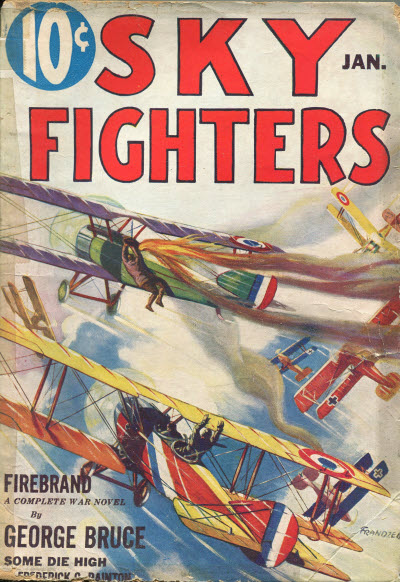 magazine has been exceedingly fortunate in securing R. Sidney Bowen to conduct a technical department each month. It is Mr. Bowen’s idea to tell us the underlying principles and facts concerning expressions and ideas of air-war terminology. Each month he will enlarge upon some particular statement in the stories of this magazine. Mr. Bowen is qualified for this work, not only because he was a war pilot of the Royal Air Force, but also because he has been the editor of one of the foremost technical journals of aviation.
magazine has been exceedingly fortunate in securing R. Sidney Bowen to conduct a technical department each month. It is Mr. Bowen’s idea to tell us the underlying principles and facts concerning expressions and ideas of air-war terminology. Each month he will enlarge upon some particular statement in the stories of this magazine. Mr. Bowen is qualified for this work, not only because he was a war pilot of the Royal Air Force, but also because he has been the editor of one of the foremost technical journals of aviation.




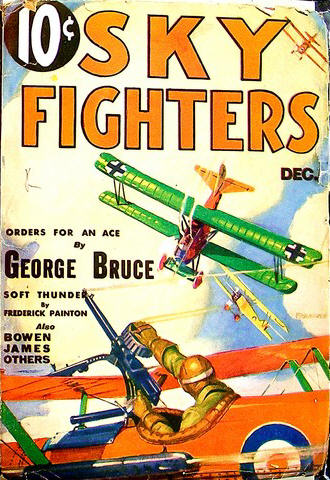 magazine has been exceedingly fortunate in securing R. Sidney Bowen to conduct a technical department each month. It is Mr. Bowen’s idea to tell us the underlying principles and facts concerning expressions and ideas of air-war terminology. Each month he will enlarge upon some particular statement in the stories of this magazine. Mr. Bowen is qualified for this work, not only because he was a war pilot of the Royal Air Force, but also because he has been the editor of one of the foremost technical journals of aviation.
magazine has been exceedingly fortunate in securing R. Sidney Bowen to conduct a technical department each month. It is Mr. Bowen’s idea to tell us the underlying principles and facts concerning expressions and ideas of air-war terminology. Each month he will enlarge upon some particular statement in the stories of this magazine. Mr. Bowen is qualified for this work, not only because he was a war pilot of the Royal Air Force, but also because he has been the editor of one of the foremost technical journals of aviation.
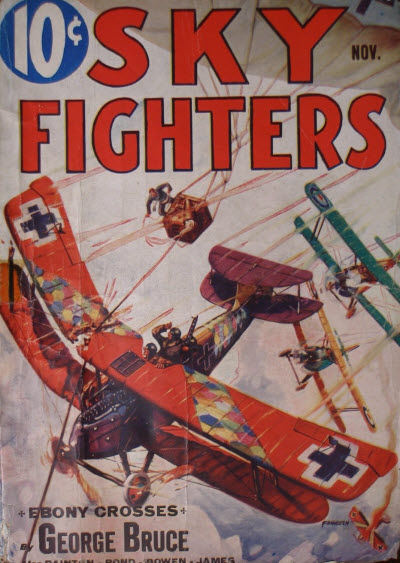 magazine has been exceedingly fortunate in securing R. Sidney Bowen to conduct a technical department each month. It is Mr. Bowen’s idea to tell us the underlying principles and facts concerning expressions and ideas of air-war terminology. Each month he will enlarge upon some particular statement in the stories of this magazine. Mr. Bowen is qualified for this work, not only because he was a war pilot of the Royal Air Force, but also because he has been the editor of one of the foremost technical journals of aviation.
magazine has been exceedingly fortunate in securing R. Sidney Bowen to conduct a technical department each month. It is Mr. Bowen’s idea to tell us the underlying principles and facts concerning expressions and ideas of air-war terminology. Each month he will enlarge upon some particular statement in the stories of this magazine. Mr. Bowen is qualified for this work, not only because he was a war pilot of the Royal Air Force, but also because he has been the editor of one of the foremost technical journals of aviation.
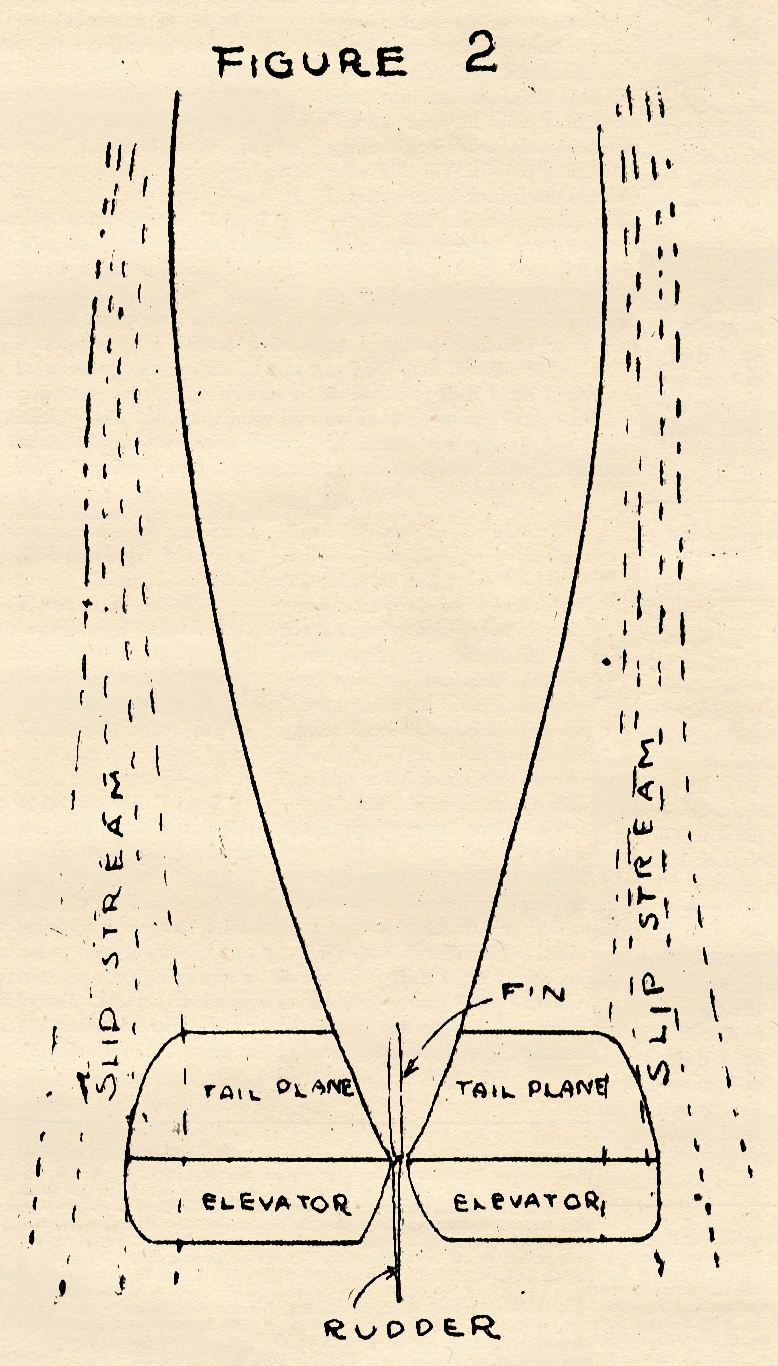

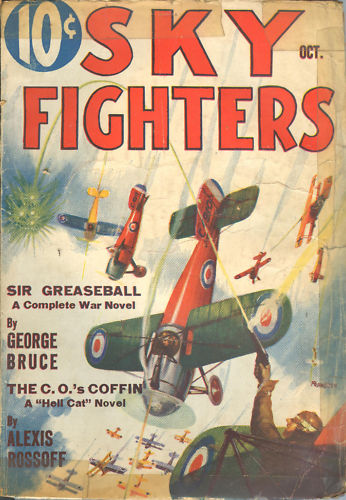 magazine has been exceedingly fortunate in securing R. Sidney Bowen to conduct a technical department each month. It is Mr. Bowen’s idea to tell us the underlying principles and facts concerning expressions and ideas of air-war terminology. Each month he will enlarge upon some particular statement in the stories of this magazine. Mr. Bowen is qualified for this work, not only because he was a war pilot of the Royal Air Force, but also because he has been the editor of one of the foremost technical journals of aviation.
magazine has been exceedingly fortunate in securing R. Sidney Bowen to conduct a technical department each month. It is Mr. Bowen’s idea to tell us the underlying principles and facts concerning expressions and ideas of air-war terminology. Each month he will enlarge upon some particular statement in the stories of this magazine. Mr. Bowen is qualified for this work, not only because he was a war pilot of the Royal Air Force, but also because he has been the editor of one of the foremost technical journals of aviation.

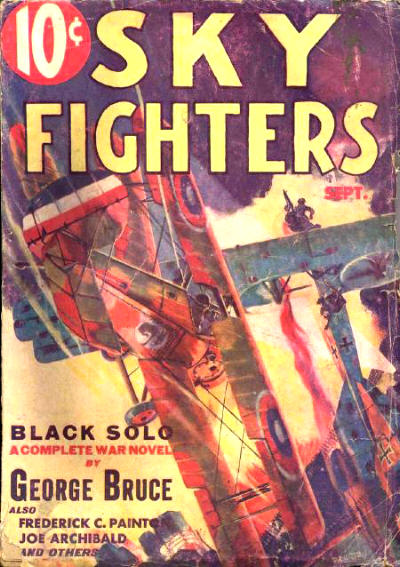 magazine has been exceedingly fortunate in securing R. Sidney Bowen to conduct a technical department each month. It is Mr. Bowen’s idea to tell us the underlying principles and facts concerning expressions and ideas of air-war terminology. Each month he will enlarge upon some particular statement in the stories of this magazine. Mr. Bowen is qualified for this work, not only because he was a war pilot of the Royal Air Force, but also because he has been the editor of one of the foremost technical journals of aviation.
magazine has been exceedingly fortunate in securing R. Sidney Bowen to conduct a technical department each month. It is Mr. Bowen’s idea to tell us the underlying principles and facts concerning expressions and ideas of air-war terminology. Each month he will enlarge upon some particular statement in the stories of this magazine. Mr. Bowen is qualified for this work, not only because he was a war pilot of the Royal Air Force, but also because he has been the editor of one of the foremost technical journals of aviation.

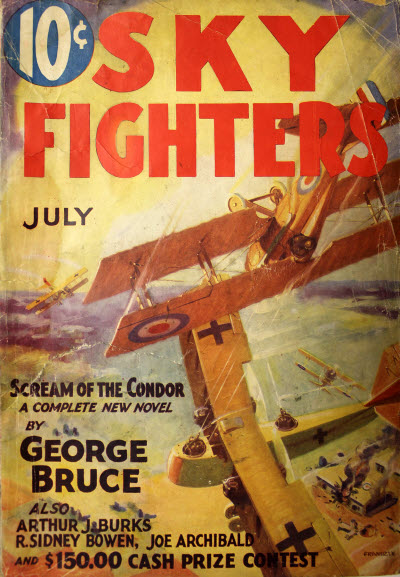 magazine has been exceedingly fortunate in securing R. Sidney Bowen to conduct a technical department each month. It is Mr. Bowen’s idea to tell us the underlying principles and facts concerning expressions and ideas of air-war terminology. Each month he will enlarge upon some particular statement in the stories of this magazine. Mr. Bowen is qualified for this work, not only because he was a war pilot of the Royal Air Force, but also because he has been the editor of one of the foremost technical journals of aviation.
magazine has been exceedingly fortunate in securing R. Sidney Bowen to conduct a technical department each month. It is Mr. Bowen’s idea to tell us the underlying principles and facts concerning expressions and ideas of air-war terminology. Each month he will enlarge upon some particular statement in the stories of this magazine. Mr. Bowen is qualified for this work, not only because he was a war pilot of the Royal Air Force, but also because he has been the editor of one of the foremost technical journals of aviation.
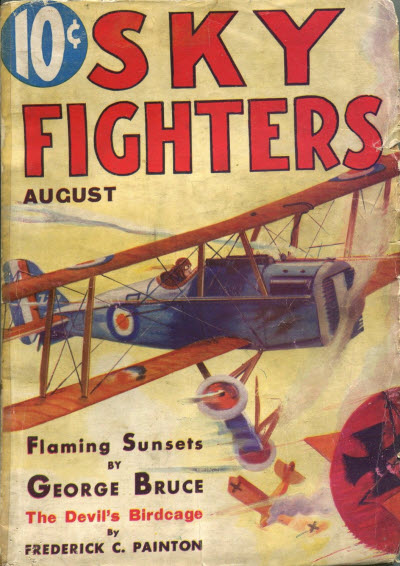 magazine has been exceedingly fortunate in securing R. Sidney Bowen to conduct a technical department each month. It is Mr. Bowen’s idea to tell us the underlying principles and facts concerning expressions and ideas of air-war terminology. Each month he will enlarge upon some particular statement in the stories of this magazine. Mr. Bowen is qualified for this work, not only because he was a war pilot of the Royal Air Force, but also because he has been the editor of one of the foremost technical journals of aviation.
magazine has been exceedingly fortunate in securing R. Sidney Bowen to conduct a technical department each month. It is Mr. Bowen’s idea to tell us the underlying principles and facts concerning expressions and ideas of air-war terminology. Each month he will enlarge upon some particular statement in the stories of this magazine. Mr. Bowen is qualified for this work, not only because he was a war pilot of the Royal Air Force, but also because he has been the editor of one of the foremost technical journals of aviation.



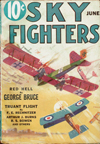 magazine has been exceedingly fortunate in securing R. Sidney Bowen to conduct a technical department each month. It is Mr. Bowen’s idea to tell us the underlying principles and facts concerning expressions and ideas of air-war terminology. Each month he will enlarge upon some particular statement in the stories of this magazine. Mr. Bowen is qualified for this work, not only because he was a war pilot of the Royal Air Force, but also because he has been the editor of one of the foremost technical journals of aviation.
magazine has been exceedingly fortunate in securing R. Sidney Bowen to conduct a technical department each month. It is Mr. Bowen’s idea to tell us the underlying principles and facts concerning expressions and ideas of air-war terminology. Each month he will enlarge upon some particular statement in the stories of this magazine. Mr. Bowen is qualified for this work, not only because he was a war pilot of the Royal Air Force, but also because he has been the editor of one of the foremost technical journals of aviation.



